Responsive Theme introduces the new Related Posts feature on a single blog post page. You can now display other related articles or posts with similar tags or categories at the end of each post.
In this article, we will explore how to use this feature.
You can also learn how to add Related Posts in Wordpress by watching this video:
What are Related Posts? #
Related posts are suggestions of other related posts or articles at the bottom of the current post. This helps to encourage users to explore more content on your website, increasing engagement and time spent on your site.
This feature enhances the user experience by showcasing relevant and related content.
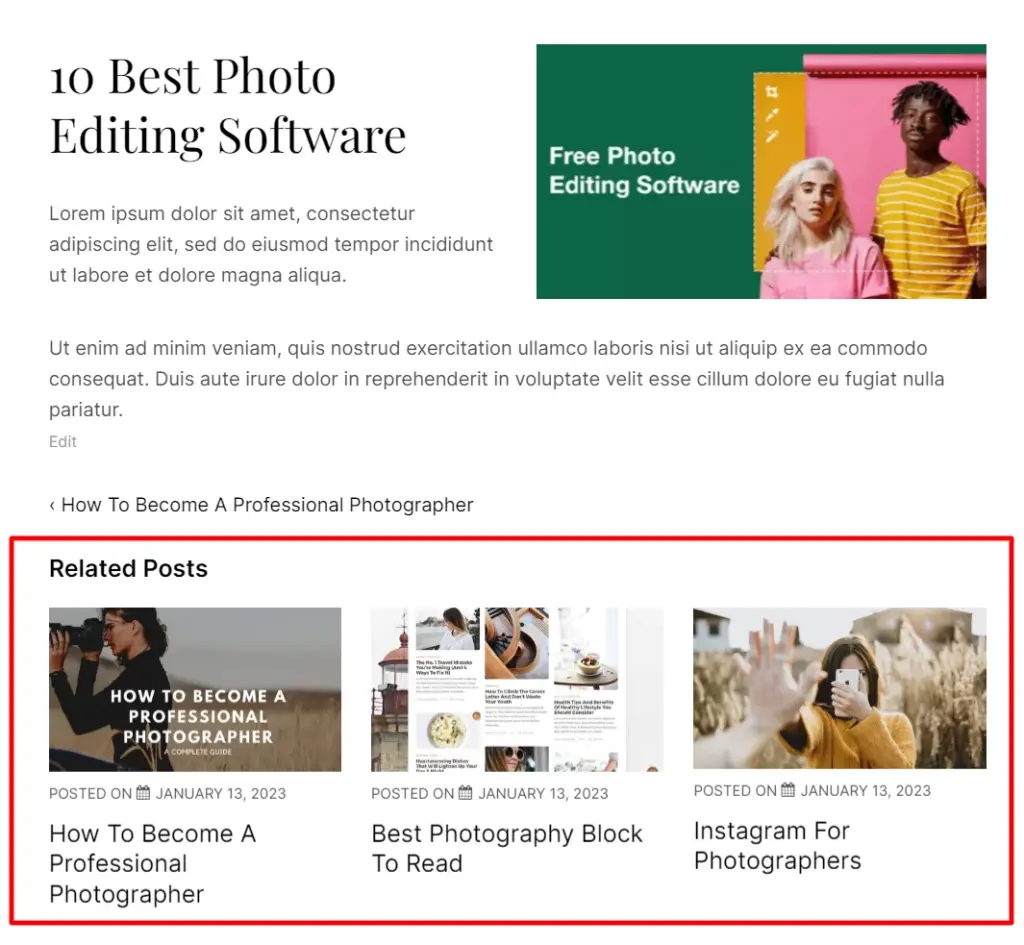
You can choose to display different articles based on categories or tags of the current article.
Let’s see how to add related posts using Responsive Theme.
Adding Related Posts Using Cyberchimps Responsive Theme. #
Responsive Theme makes displaying related posts on all single posts pretty simple and easy. The option is included in the theme settings and doesn’t need any extra plugins. You get multiple customization options to display and customize related posts.
Here’s how you can enable related posts on single posts
To edit related posts, go to your blog post’s Customize option at the top.

Click on the Blog/Archive option first, then select Single Post.

Under Single Post, Check the Enable Related Posts checkbox to display content on your blog.

Related posts for a single post are now active. Check out how to edit related posts.
Customizing the Related Posts #
Choose from the customization options available here and start editing.
1. Section Title #
This feature allows you to modify the title of your post.
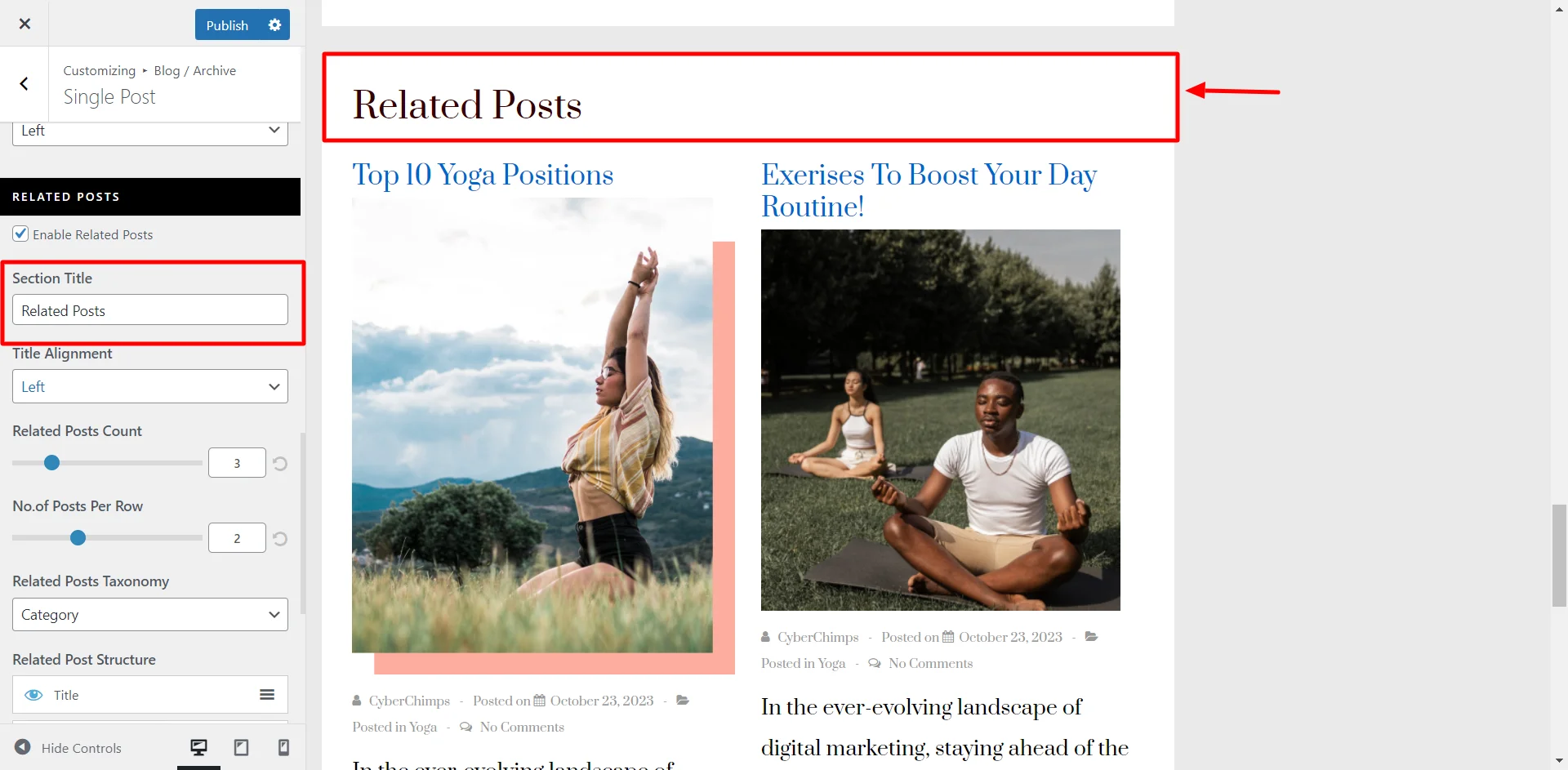
2. Title Alignment #
Change the position of the page title, such as left, center, or right alignment, to create an aesthetically pleasing layout.
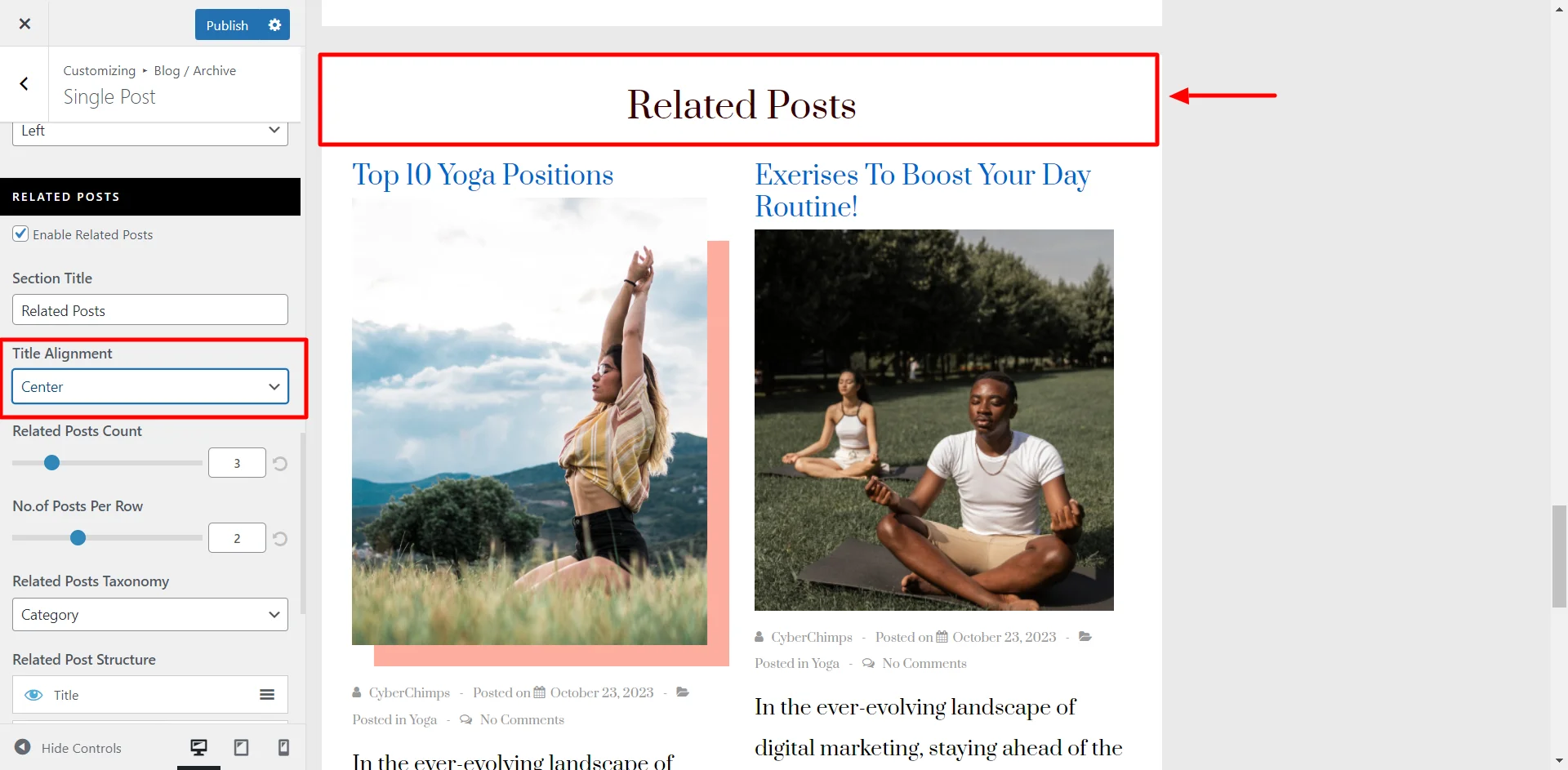
3. Related Posts Count & No. of Posts Per Row #
Choose how many posts to display based on design or content.
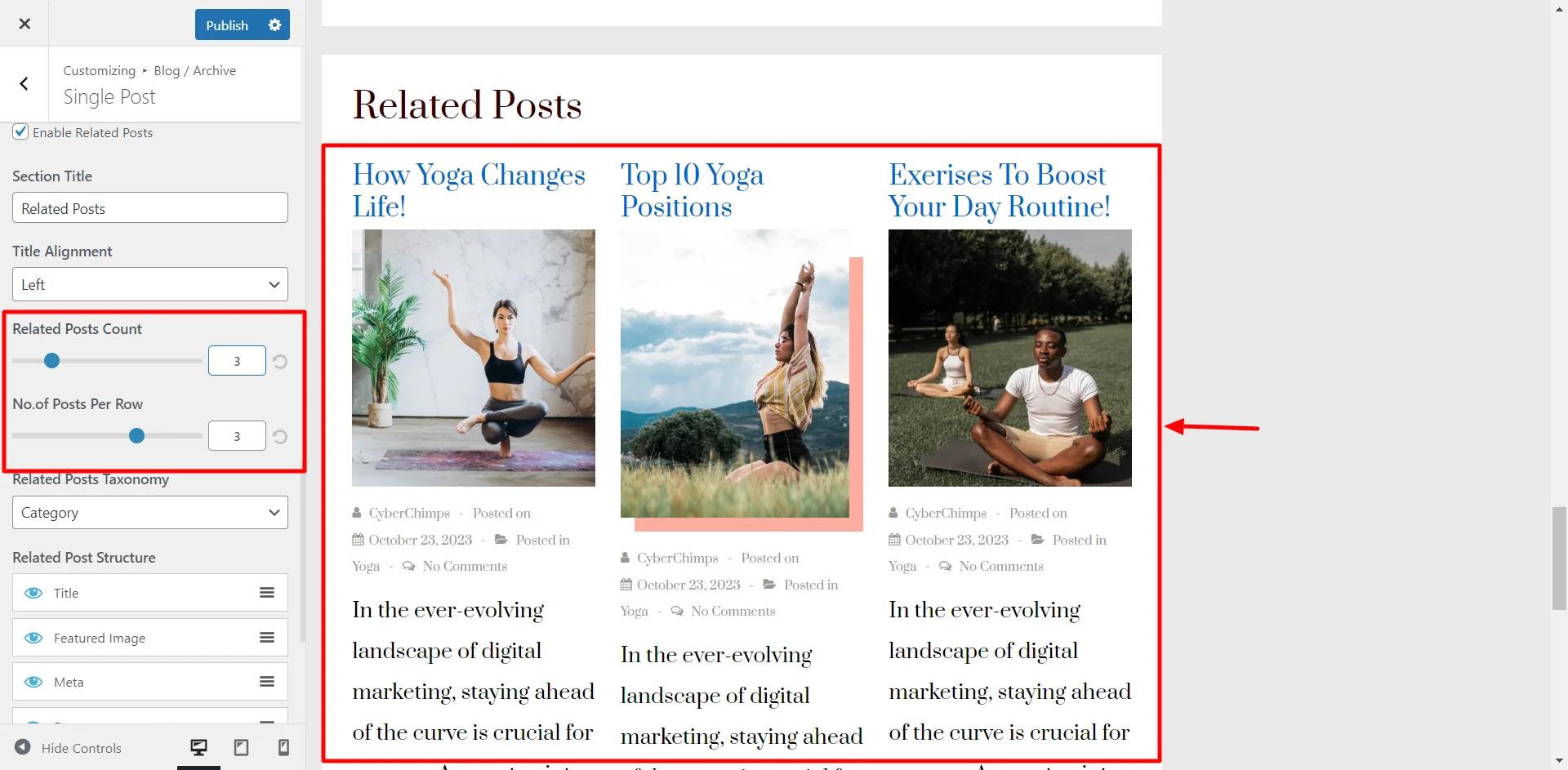
In addition, you can select the number of posts to display per row.
4. Related Posts Taxonomy #
You can choose whether to fetch content based on categories or tags. Categories represent broader topics, while tags are more specific descriptors.
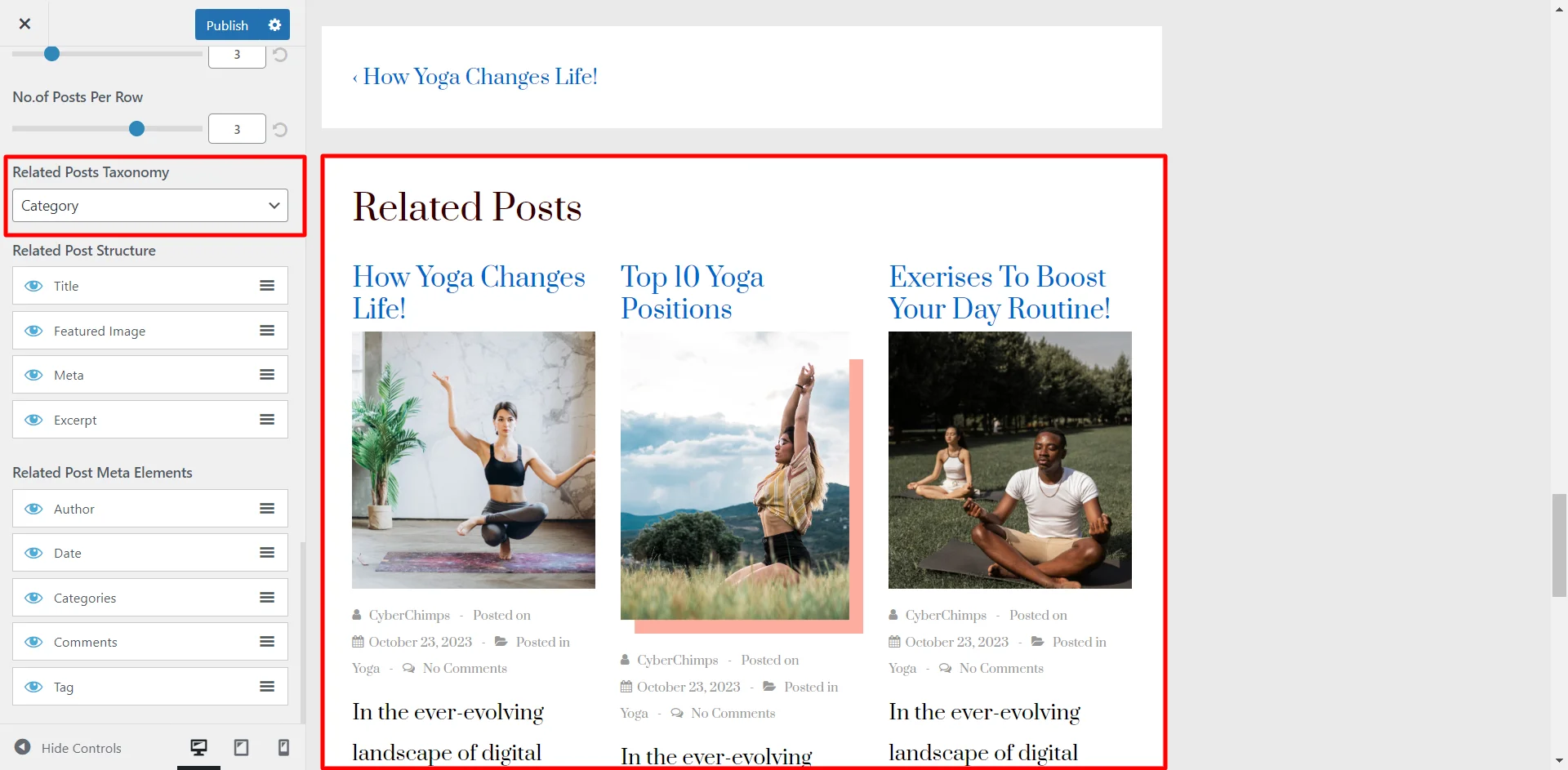
5. Related Post Structure #
You can personalize how blog posts are displayed on a website.

- Title: The post title serves as a hyperlink to the full post.
- Featured Image: It’s the picture that is displayed with a blog post. It is the first thing users see when they come across the post.
- Excerpt: A brief summary of a post’s content, providing a glimpse of its topic.
Furthermore, you can arrange the hierarchy of elements based on how you want them to be displayed on your website.
6. Related Post Meta Elements #
Provide additional information related to a post and include various details. These components are typically placed next to or below the relevant posts.
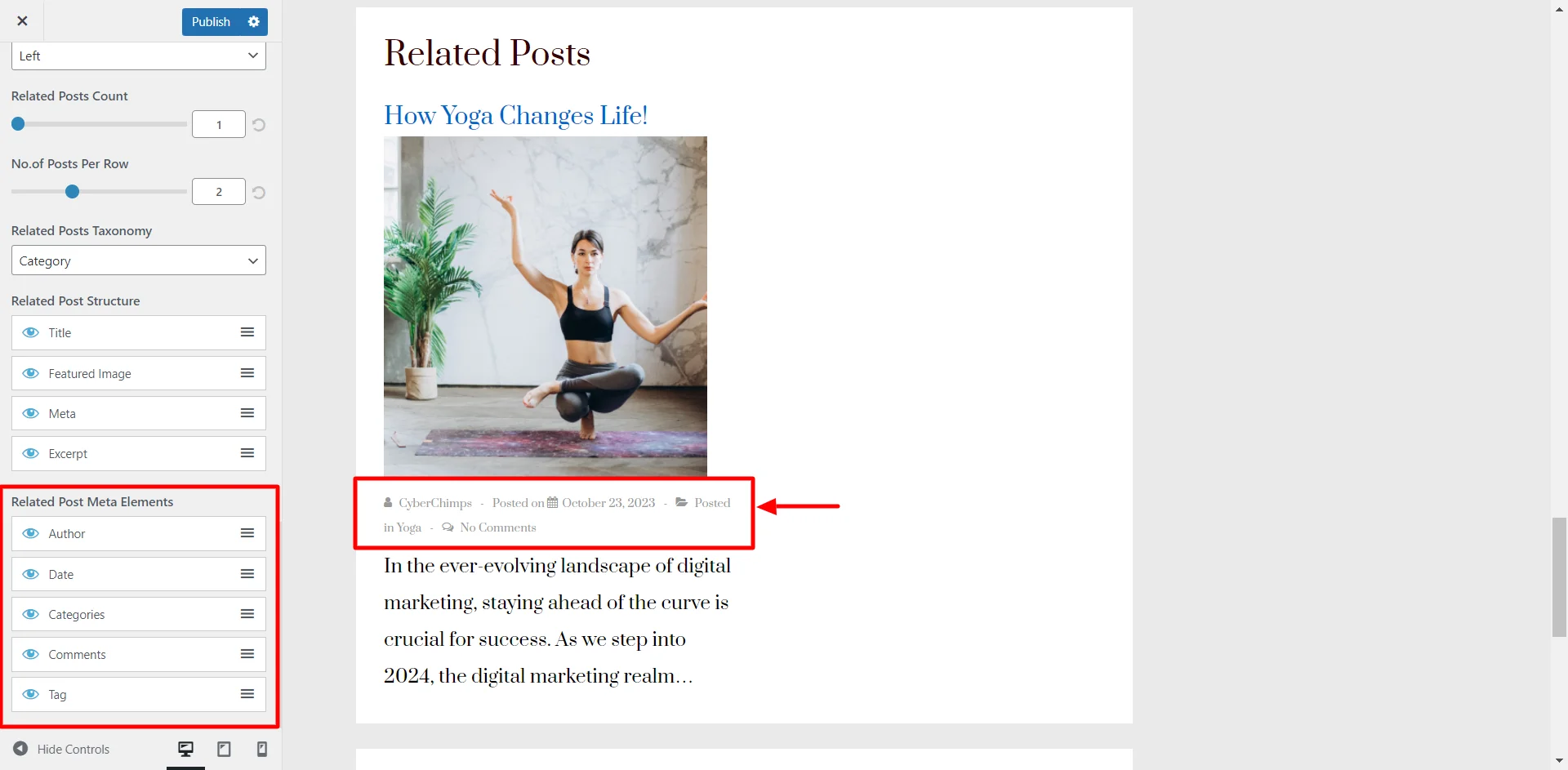
They can include various information such as:
- Author: The name or username of the post writer.
- Date: refers to the date on which the post was published.
- Categories: It helps the readers to comprehend the post’s topic easily.
- Comments: It refers to the count of conversations or interactions taking place on a blog post.
- Tag: These are keywords or labels used to classify content.
These meta-elements make it easier for users to decide which article to explore by providing information about the articles.
Also, you can click on the eye icon next to the element’s name to hide or disable any elements.
Once you’re done, click on Publish.
Congratulations, you have successfully added related posts to your blog!
All things considered, your blog’s posts will display related content at the end of the article, making your blog more informative and engaging.
Get Responsive Theme For Your Website Today!





